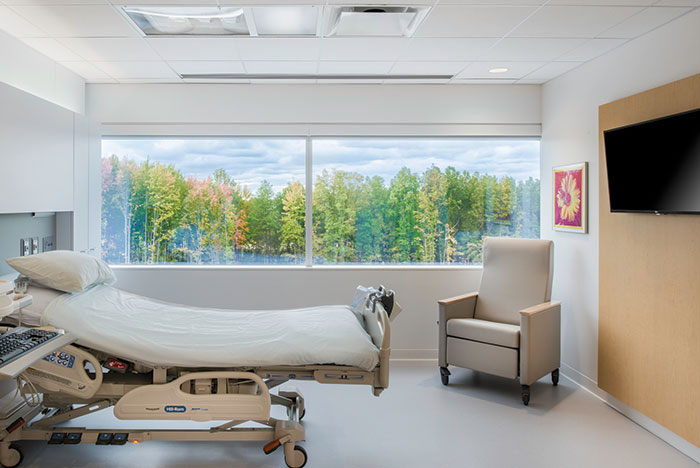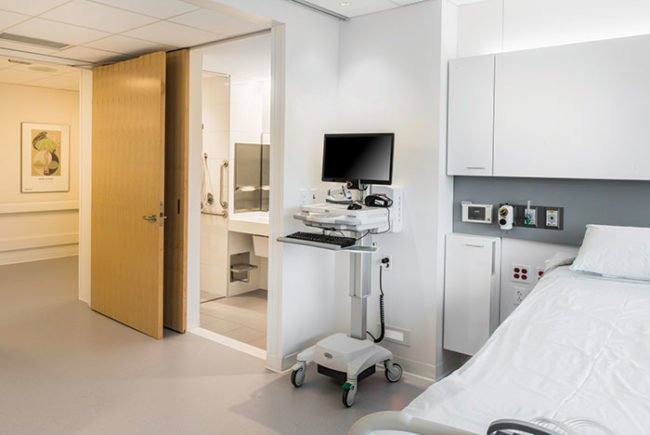The following comments were provided by caregivers during the mock-up portion of the evidence-based design project at the Cleveland Clinic Foundation’s Avon Hospital, which is a focus of the main article:
- Likes. Visibility and access to the patient, size of room, single room, size of TV and clock location.
- Needs. A portable handheld call bell; to keep in mind clearances needed around bath, visitors and bed during emergencies; bathroom doors that are easier to open and close; a folding or dropdown desk near the patient bedside; and personal and controllable reading lights.
- Things that make team care delivery and handover difficult. Lack of space; the division of area between the sink and bedside spreads the care team around the room; position of whiteboard makes changes difficult; and computer location could hamper handoff.
- Things that make communications with the patient difficult. Too many buttons at the bedside might be confusing; the intercom is too far from the bed; the nurse call light is too close to other outlets and hard to cancel; no portable handheld call bell for a patient who is out of bed; there may not be a monitor to speak into; and solid doors with no glass means nurses cannot see a patient in the room from the corridor.
- Things that would make patient care activities difficult. Reclining chair interferes with whiteboard access; the whiteboard is too small; date, caregiver name and room number should be added to the whiteboard; location of medication room in relation to the patient room is important; design requires the caregiver to enter the room fully to see the patient, which could disturb the patient at night; there is no ability to scan medications; there is no surface space for medication preparation; the area around the bed is too crowded; and the location of medical gases impacts medication administration.
Philip LiBassi, FAIA, FACHA, is senior principal at DLR Group|Westlake Reed Leskosky. He can be reached at plibassi@dlrgroup.com. Supporting information was provided by EwingCole’s Nicholas Watkins, Ph.D., director of research, and Esperanza Harper, EDAC, health care planner.






